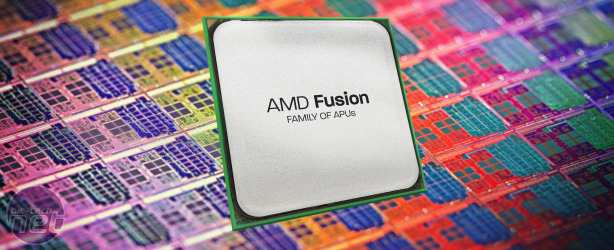Performance Analysis
To test the A8-3850, we pitted it against the Intel Core i3-2100, which retails for a similar price. We also attempted to use comparably priced motherboards to ensure that the overall system cost of the two test rigs was roughly the same. For a full run-down of our test components, see our Test Setup page.Testing started well for AMD’s new processor, as its score of 3.33 in Cinebench 11.5 was 0.33 ahead of Intel's competitor. It was a similar story in WPrime 32M; the A8-3850’s score of 14.443 seconds was well ahead of the 18.090 seconds that the i3-2100 took to finish the test. AMD fans shouldn’t start whooping too soon though; these two tests simply love extra physical cores, an area in which the quad-core A8-3850 trumps the dual-core i3-2100.
A much sterner test was provided by our real-world Media Benchmarks suite. While making use of multiple cores, this also rewards processors with higher IPC (instructions per clock). The i3-2100 was king in this area, as the Intel Sandy Bridge architecture can process much more information per clock cycle than AMD’s ageing K10 architecture.
The image editing test also saw the A8-3850’s score of 889 trumped by the i3-2100’s 1,331 - a massive 49 per cent faster. This pattern was repeated in the other tests, with the A8-3850 trailing by 28 per cent in the video encoding test - a test that usually rewards processors with extra cores. The overall score for the A8-3850 was 1,059, well behind the 1,476 of the Intel processor.
Click to enlarge
However, the main bonus of AMD’s new Llano APUs is their improved 3D performance in games; can they form the basis of a cheap gaming PC? And do they spell doom for entry-level GPUs? The answer to both questions is an emphatic yes.
At 1,280 x 720 with 0x AA, the A8-3850 produced a minimum frame rate of 54fps in Left 4 Dead 2 with all the settings at high. This is an excellent result, and means that it’s finally possible to build an HTPC able to play games at 720p without the need for a discrete GPU. In comparison, the i3-2100’s minimum frame rate of 13fps at the same settings was nowhere near playable.
The A8-3850 continued to perform well at higher resolutions in Left 4 Dead 2. At 1,680 x 1,050, the APU managed a minimum frame rate of 33fps, which was comfortably within the limits of playability, even when the hoard of zombies fell upon us.
This makes a Llano-based system a genuine contender if you want to play less graphically demanding games at the native resolution of a 22in screen. Call of Duty: Black Ops also proved playable on the A8-3850 at 1,280 x 720 without any AA, although it couldn’t handle a resolution higher than this.
A more subtle difference between the two chips when it came to 3D performance was in image quality. Using the i3-2100’s Intel GPU, games lacked some of the soft shadows that we saw on the AMD system, despite all the game settings being the same. The loss of these shadows was immediately noticeable, as they add depth and realism to an environment.

MSI MPG Velox 100R Chassis Review
October 14 2021 | 15:04










Want to comment? Please log in.